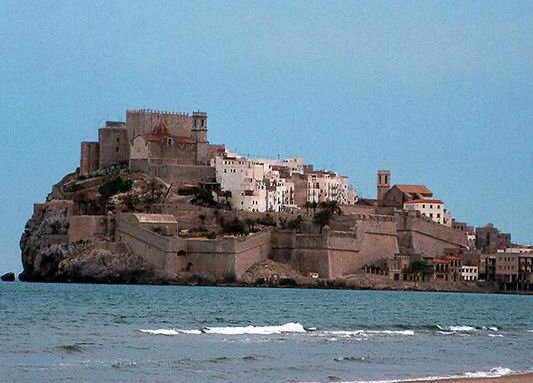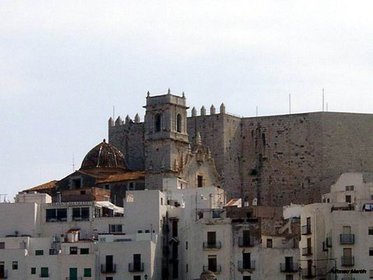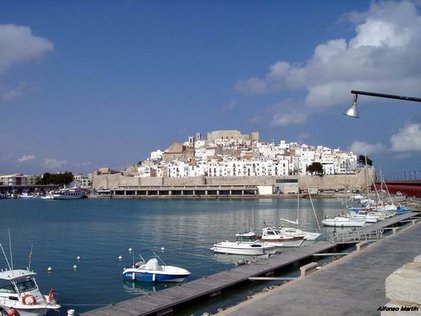
Costa del sol bjuder på många dina utflyktsmål.
Läs om mina förslag på vackra bergsturer.
Välkommen till min webbsida som handlar om trivsamma platser i Europa, utflykter i Andalusien och sköna promenader i Stockholm.
Klicka på det som intresserar dig!
Trevlig läsning

PEÑÍSCOLA
E15, AP7, 8 km east of exit 43

Peñíscola sits perched on top of a rocky peninsula in the sea, looking from a distance like a shipwreck. As you come closer you will be able to make out the castle on the clifftop, the white houses, grouped together around the castle and the mighty wall with its bulwark, towers and pinnacles. Inside the walls you can lose yourself in a labyrinth of narrow, steep streets lined with bars, restaurants and little nick-nack shops.
SEVERAL CIVILISATIONS IN SUCCESSION
In Peñíscola many civilisations have followed one another in quick succession. The Phenicians settled here, as did the Greeks, Carthaginians, Romans and Arabs. They all took advantage of its favourable location, designed to make an impregnable, secure hideaway for its inhabitants. Early on the rock’s natural capacity for defence was boosted by the construction of high walls. There was also a permanent supply of fresh water, sprung straight out of the rock, and it was a likely site for a harbour.

PAPA LUNA – THE IMAGINARY POPE
In connection with the recapture of Spain from the Moors the latter were driven away from Peñíscola by James I of Aragon, who handed over the fortress to the Order of the Knights Templar in 1233. At the end of the 13th century the knights built a castle over the ruins of an Arabic alcazaba. This is the castle we see here today, although it has been subjected to various reconstructions through the ages and damaged in times of war. The biggest alteration of the castle was undertaken by “Pope” Benedict XIII, also known as Papa Luna, who resided here between 1412 – 1422. He oversaw the transformation of the castle into a slightly more palace-like dwelling to bring it more in line with his little papal court. For Benedict, in spite of being appointed Pope, was never really allowed to officiate, due to a schism within the Catholic church. But Papa Luna refused to accept this fact, withdrew to Peñíscola with his faithful cardinals and pretended to be Pope until his death in 1422. In the 16th century the defence walls were significantly extended at the command of King Filip II and so were given their present day look. Filip V awarded the fortress town charter in recognition of the great loyalty shown to him by the citizens during the Spanish war of succession.
A MODERN SEASIDE RESORT
Latterly, Peniscola has sprawled out on either side of the peninsula and developed into a large, modern seaside resort. North of the peninsula La Playa Norte stretches out endlessly, a wide beach with a promenade, unfortunately trafficked, but bordered by palm trees and with a string of hotels, restaurants, cafés and boutiques. On the other side of the peninsula little beaches lie squeezed in between steep cliffs, the whole landscape beckoning you to come for a ramble or a dip in the sea from one of the little beaches.
The castle and the little church of Virgen de la Ermita rise high above the white houses
The rock peninsula as seen from the other side